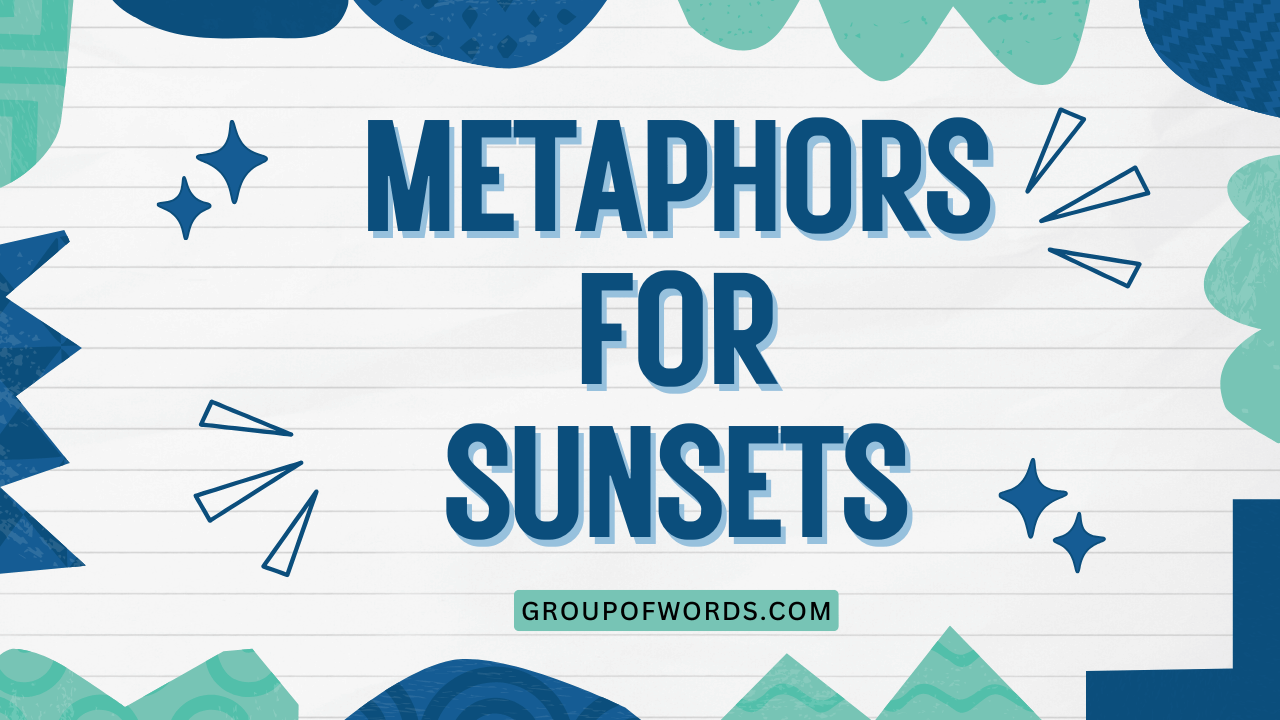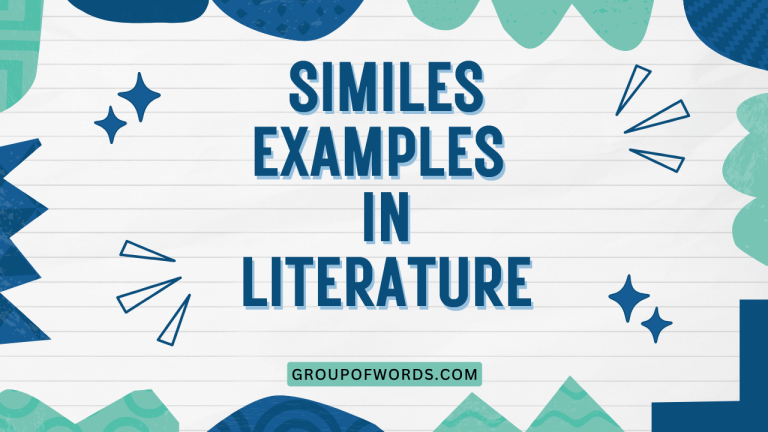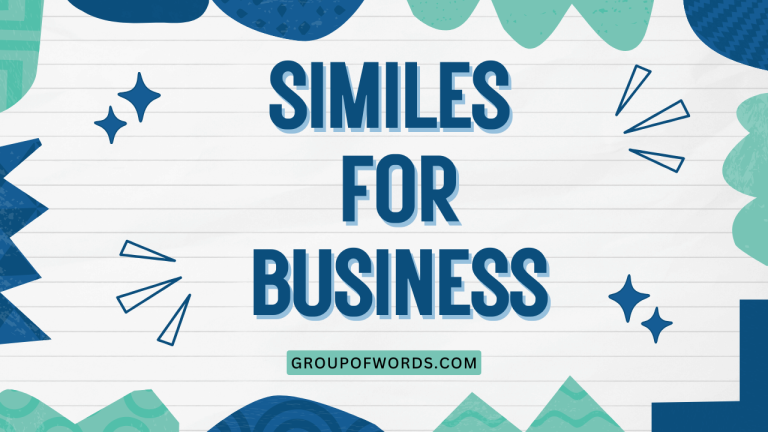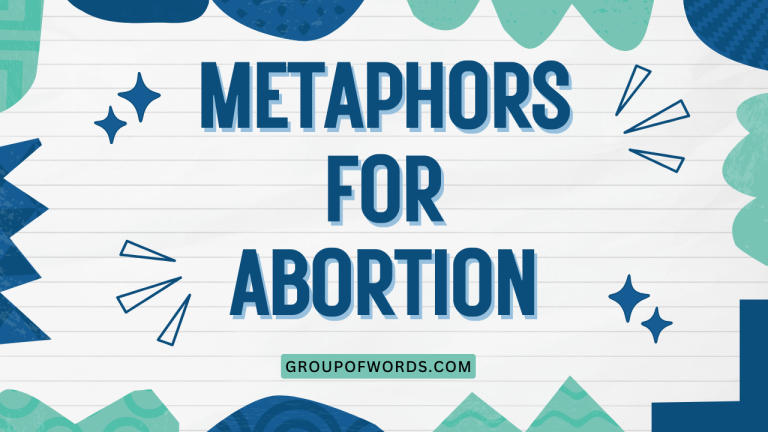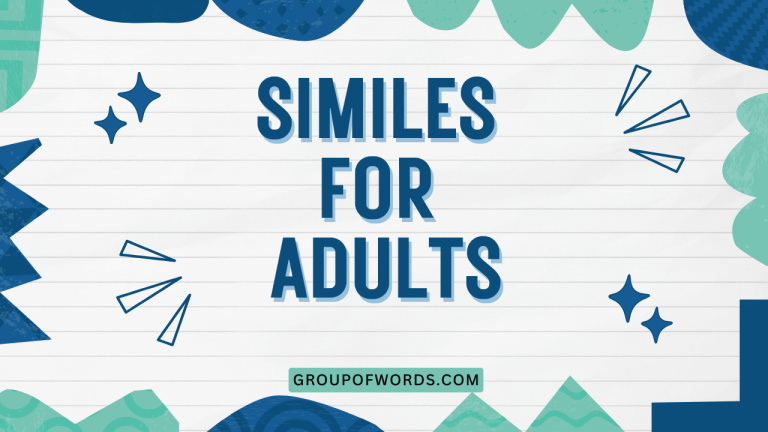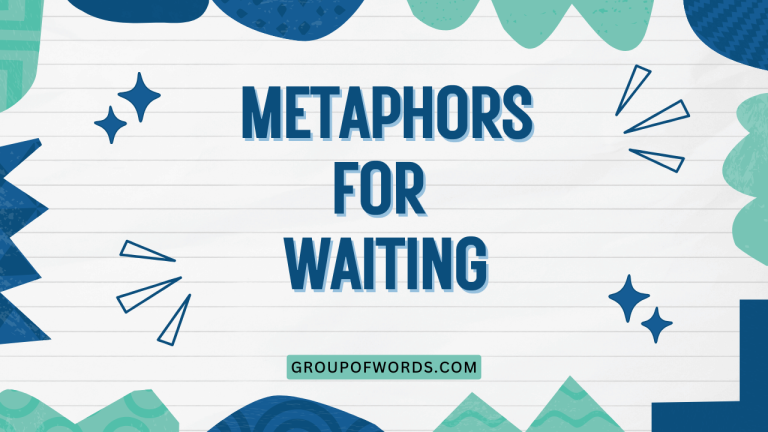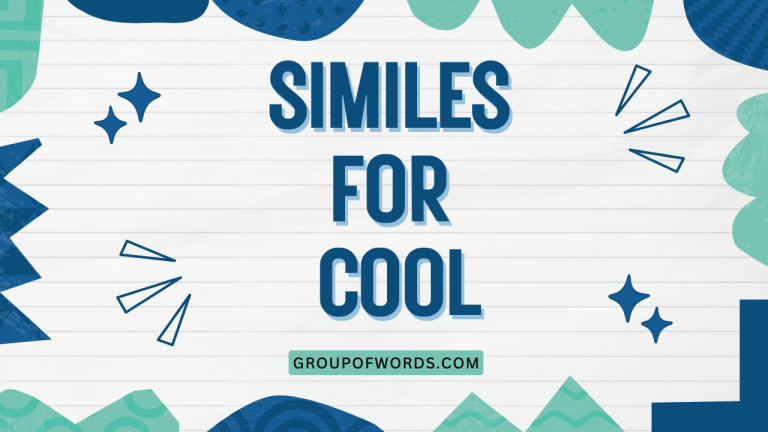Sunset Metaphors: Painting the Sky with Words
Sunsets, with their breathtaking displays of color and light, have captivated humanity for millennia. We often find ourselves reaching for words to describe their beauty, and metaphors provide a powerful tool to do so.
Understanding how metaphors function, particularly in the context of sunsets, allows us to appreciate the artistry of language and the nuances of descriptive writing. This article delves into the world of sunset metaphors, exploring their structure, types, and usage, equipping you with the knowledge to both understand and create vivid descriptions of these daily masterpieces.
This guide is perfect for students, writers, and anyone who wants to enhance their understanding of figurative language and descriptive writing.
By exploring various types of sunset metaphors, examining usage rules, and practicing with exercises, you’ll gain a deeper understanding of how language can be used to evoke emotions and paint vivid pictures in the reader’s mind. This exploration will not only improve your writing skills but also enhance your appreciation for the beauty of language itself.
Table of Contents
- Definition of Metaphor
- Structural Breakdown of Sunset Metaphors
- Types and Categories of Sunset Metaphors
- Examples of Sunset Metaphors
- Usage Rules for Sunset Metaphors
- Common Mistakes with Sunset Metaphors
- Practice Exercises
- Advanced Topics in Sunset Metaphors
- Frequently Asked Questions
- Conclusion
Definition of Metaphor
A metaphor is a figure of speech that directly compares two unlike things without using “like” or “as.” It asserts that one thing *is* another, creating a vivid and often surprising connection between them. Metaphors are essential tools for writers and speakers, allowing them to express complex ideas in a concise and imaginative way. They enrich language by adding layers of meaning and emotional resonance.
In essence, a metaphor transfers qualities from one thing to another to create a new understanding. This transference isn’t literal but imaginative, relying on shared characteristics or associations.
The power of a metaphor lies in its ability to illuminate a subject in a fresh and insightful way.
Metaphors function by creating an implied analogy. They don’t state a similarity explicitly; instead, they invite the reader or listener to make the connection themselves.
This active participation engages the audience and makes the message more memorable and impactful. A good metaphor is not only descriptive but also thought-provoking.
Structural Breakdown of Sunset Metaphors
Sunset metaphors, like all metaphors, consist of two main elements: the tenor and the vehicle. The tenor is the subject being described (in this case, the sunset). The vehicle is the object or concept to which the sunset is being compared.
The effectiveness of a sunset metaphor depends on the relationship between the tenor and the vehicle. The vehicle should possess qualities that effectively highlight or illuminate aspects of the sunset.
For example, comparing a sunset to a “fiery furnace” uses the vehicle’s (furnace’s) heat and intense color to emphasize the sunset’s similar characteristics.
Consider the metaphor: “The sunset was a painter’s masterpiece.” Here, the tenor is the sunset, and the vehicle is a painter’s masterpiece. The shared qualities are beauty, artistry, and the skillful blending of colors. The structure is simple but effective, creating a strong image in the reader’s mind. The implication is that the sunset is as carefully and beautifully crafted as a painting by a master artist.
Another example: “The sunset bled across the horizon.” The tenor is the sunset, and the vehicle is the act of bleeding. The shared qualities are the spreading of color and the idea of something dissipating or fading.
This metaphor evokes a sense of drama and transience.
Types and Categories of Sunset Metaphors
Sunset metaphors can be categorized based on the aspects of the sunset they emphasize and the concepts they draw upon. Here are some common categories:
Color-Based Metaphors
These metaphors focus on the vibrant colors of the sunset, comparing them to other colorful objects or phenomena. They often evoke a sense of beauty, vibrancy, and intensity.
Examples include comparing the sunset to molten gold, a painter’s palette, or a rainbow smeared across the sky. These metaphors highlight the visual spectacle of the sunset and its rich tapestry of colors.
Fire and Heat Metaphors
These metaphors emphasize the fiery nature of the sunset, drawing parallels to flames, embers, and scorching heat. They often convey a sense of power, energy, and passion.
Examples include describing the sunset as a burning inferno, a fiery kiss on the horizon, or the earth’s forge. These metaphors capture the intense heat and brilliant light associated with the setting sun.
Liquid and Fluid Metaphors
These metaphors focus on the way the colors of the sunset seem to flow and blend, comparing them to liquids such as paint, blood, or wine. They often evoke a sense of fluidity, movement, and transience.
Examples include describing the sunset as molten gold pouring across the sky, a watercolor wash, or the sky bleeding into night. These metaphors capture the dynamic and ever-changing nature of the sunset.
Emotion-Based Metaphors
These metaphors connect the sunset to human emotions, such as joy, sadness, or peace. They often create a deeper emotional connection with the reader, imbuing the sunset with human qualities.
Examples include describing the sunset as a farewell kiss, a moment of quiet reflection, or a burst of joy. These metaphors personalize the sunset, making it relatable and emotionally resonant.
Object-Based Metaphors
These metaphors compare the sunset to specific objects, drawing on the qualities associated with those objects to describe the sunset. They can be concrete or abstract, depending on the desired effect.
Examples include describing the sunset as a stained-glass window, a celestial curtain, or a fading dream. These metaphors provide a tangible point of reference for understanding the sunset’s beauty and transience.
Examples of Sunset Metaphors
Here are some examples of sunset metaphors, categorized by the type of metaphor they represent. Each table provides a range of examples to illustrate the variety and creativity possible when using metaphors to describe sunsets.
The following table showcases color-based metaphors, emphasizing the vibrant hues and shades that paint the evening sky.
| Category | Example |
|---|---|
| Color | The sunset was a canvas of fire, painted with hues of orange and crimson. |
| Color | The sky transformed into a liquid gold, shimmering before fading into twilight. |
| Color | It was as if the heavens had spilled a rainbow of colors onto the horizon. |
| Color | The sunset was a bouquet of roses, each petal a different shade of pink and red. |
| Color | The clouds were amethyst jewels, catching the fading light of the sun. |
| Color | The sunset was a stained-glass window, its colors glowing with ethereal light. |
| Color | The sky was a painter’s palette, swirled with every imaginable shade. |
| Color | The sunset was an explosion of tangerine dreams across the sky. |
| Color | The horizon looked like a scarlet ribbon, stretched taut against the fading blue. |
| Color | The sun dipped below the horizon like a melting ruby. |
| Color | The sunset was a symphony of golden trumpets, announcing the arrival of night. |
| Color | The sky resembled a coral reef, teeming with vibrant colors and shapes. |
| Color | It was as if the sky was a dragon’s hoard, filled with gold and precious gemstones. |
| Color | The sunset painted the clouds with strokes of peach and lavender. |
| Color | The sky became a fiery tapestry woven with threads of red and orange. |
| Color | The sunset was a kaleidoscope of colors, constantly shifting and changing. |
| Color | The clouds were like glowing embers, scattered across the evening sky. |
| Color | The setting sun was a blazing comet, streaking across the horizon. |
| Color | The sky was a field of poppies, blooming in shades of red and orange. |
| Color | The sunset resembled a tropical cocktail, mixed with vibrant colors and flavors. |
| Color | The horizon was a band of fire, separating day from night. |
| Color | The sunset was a phoenix rising, its feathers ablaze with color. |
| Color | The sky transformed into a prism, scattering light in every direction. |
| Color | The sunset was a jeweled crown, adorning the head of the earth. |
The subsequent table explores fire and heat metaphors, capturing the intensity and energy of the setting sun.
| Category | Example |
|---|---|
| Fire/Heat | The sunset was a fiery furnace, its heat radiating across the land. |
| Fire/Heat | The sun sank below the horizon like a molten coin disappearing into a forge. |
| Fire/Heat | The sky was ablaze, a burning inferno consuming the day. |
| Fire/Heat | The sunset was the earth’s forge, hammering out the darkness of night. |
| Fire/Heat | The sun’s departure was a fiery kiss on the horizon. |
| Fire/Heat | The sunset was a smoldering ember, glowing softly before fading away. |
| Fire/Heat | The sun was a burning coal, slowly cooling as it dipped below the hills. |
| Fire/Heat | The sunset was a volcanic eruption of color, spewing across the sky. |
| Fire/Heat | The sun was a branding iron, searing the sky with its fiery signature. |
| Fire/Heat | The sunset was a dragon’s breath, hot and fierce against the cool evening air. |
| Fire/Heat | The sun was a furnace door, slowly closing and revealing the darkness within. |
| Fire/Heat | The sunset was a bonfire, crackling with warmth and light before dying down. |
| Fire/Heat | The sun was a solar flare, briefly illuminating the world before disappearing. |
| Fire/Heat | The sunset was a forge’s glow, reflecting off the clouds like heated metal. |
| Fire/Heat | The sun was a hot coal, slowly dimming as it sank into the earth. |
| Fire/Heat | The sunset was a blast furnace, consuming the day in its fiery embrace. |
| Fire/Heat | The sun was a torch, passed to the moon to light the night. |
| Fire/Heat | The sunset was a burning bush, its flames reaching towards the heavens. |
| Fire/Heat | The sun was a forge hammer, pounding out the day’s end. |
| Fire/Heat | The sunset was a fiery sword, slashing across the sky. |
| Fire/Heat | The sun was a lava flow, spreading its molten colors across the horizon. |
| Fire/Heat | The sunset was a kiln, firing the sky with its intense heat. |
| Fire/Heat | The sun was a red-hot poker, branding the sky with its fiery mark. |
| Fire/Heat | The sunset was a burning brand, sizzling as it touched the earth. |
The next table includes liquid and fluid metaphors, emphasizing the flowing and dynamic nature of the sunset’s colors.
| Category | Example |
|---|---|
| Liquid/Fluid | The sunset bled across the horizon, staining the sky with its colors. |
| Liquid/Fluid | The sky was a watercolor wash, with hues blending seamlessly into each other. |
| Liquid/Fluid | The sunset was like molten gold pouring over the edge of the world. |
| Liquid/Fluid | The clouds were rivers of fire, flowing across the sky. |
| Liquid/Fluid | The sunset was a sea of color, ebbing and flowing with the changing light. |
| Liquid/Fluid | The sky was a giant canvas, where colors swirled and mixed like paint. |
| Liquid/Fluid | The sunset was liquid fire, slowly engulfing the day. |
| Liquid/Fluid | The horizon looked like spilled wine, staining the clouds with its rich color. |
| Liquid/Fluid | The sky was a flowing river of light, carrying the day towards night. |
| Liquid/Fluid | The sunset was a tidal wave of color, crashing against the shoreline of the horizon. |
| Liquid/Fluid | The sky was a giant dye vat, coloring the clouds with its vibrant hues. |
| Liquid/Fluid | The sunset was a stream of fire, winding its way through the heavens. |
| Liquid/Fluid | The sky was a vat of gold, slowly draining as the sun set. |
| Liquid/Fluid | The sunset was a flood of color, inundating the world with its beauty. |
| Liquid/Fluid | The sky was a sea of flames, lapping at the edges of the earth. |
| Liquid/Fluid | The sunset was a wave of light, washing over the landscape. |
| Liquid/Fluid | The sky was a pool of fire, reflecting the sun’s dying embers. |
| Liquid/Fluid | The sunset was a river of gold, flowing into the sea of night. |
| Liquid/Fluid | The sky was a lake of fire, shimmering with reflected light. |
| Liquid/Fluid | The sunset was a cascade of colors, pouring down from the heavens. |
| Liquid/Fluid | The sky was a fountain of light, spraying colors in every direction. |
| Liquid/Fluid | The sunset was a stream of lava, flowing across the sky’s canvas. |
| Liquid/Fluid | The sky was a well of fire, slowly emptying as the sun descended. |
| Liquid/Fluid | The sunset was a potion, brewing colors in the sky. |
This table presents emotion-based metaphors, connecting the sunset with various human feelings and experiences.
| Category | Example |
|---|---|
| Emotion | The sunset was a farewell kiss, bidding adieu to the day. |
| Emotion | The sky reflected a moment of quiet reflection, as the day drew to a close. |
| Emotion | The sunset was a burst of joy, celebrating the end of a long day. |
| Emotion | The fading light was a sigh of relief, as the world prepared to rest. |
| Emotion | The sunset was a promise of hope, heralding the dawn of a new day. |
| Emotion | The sky wore a mask of melancholy, as the sun disappeared from sight. |
| Emotion | The sunset was a wave of tranquility, washing over the world. |
| Emotion | The fading light was a gentle whisper, lulling the world to sleep. |
| Emotion | The sunset was a declaration of love, painted across the sky. |
| Emotion | The sunset was a feeling of peace, settling over the land. |
| Emotion | The sunset was a triumphant roar, celebrating the day’s victories. |
| Emotion | The fading light was a silent farewell, as the sun sank into the sea. |
| Emotion | The sunset was a moment of gratitude, thanking the day for its gifts. |
| Emotion | The sky wore a cloak of sadness, as the sun bid its final goodbye. |
| Emotion | The sunset was a wave of serenity, calming the world’s worries. |
| Emotion | The fading light was a tender embrace, comforting the weary soul. |
| Emotion | The sunset was a spark of inspiration, igniting the imagination. |
| Emotion | The sky reflected a sense of wonder, as the sun performed its daily miracle. |
| Emotion | The sunset was a moment of reflection, inviting introspection and contemplation. |
| Emotion | The fading light was a soothing balm, healing the day’s wounds. |
| Emotion | The sunset was a sigh of contentment, as the day’s work was done. |
| Emotion | The sky wore a veil of mystery, as the sun disappeared behind the horizon. |
| Emotion | The sunset was a feeling of nostalgia, evoking memories of days gone by. |
| Emotion | The fading light was a gentle caress, soothing the world to sleep. |
Finally, this table provides examples of object-based metaphors, comparing the sunset to various tangible items.
| Category | Example |
|---|---|
| Object | The sunset was a stained-glass window, its colors glowing with divine light. |
| Object | The sky was a celestial curtain, slowly closing to reveal the night. |
| Object | The sunset was a fading dream, disappearing with the last rays of light. |
| Object | The clouds were ships sailing on a sea of fire. |
| Object | The sunset was a painted scroll, unfurling across the sky. |
| Object | The sky was a giant tapestry, woven with threads of light and color. |
| Object | The sunset was a glowing orb, sinking below the horizon. |
| Object | The clouds resembled floating islands in a sea of fire. |
| Object | The sunset was a fiery jewel, embedded in the sky. |
| Object | The sky was a giant screen, projecting the day’s final scene. |
| Object | The sunset was a glowing ember, fading into the night. |
| Object | The clouds were cotton candy, spun from the day’s last light. |
| Object | The sunset was a burning mirror, reflecting the sky’s fiery colors. |
| Object | The sky was a giant dome, painted with the sunset’s hues. |
| Object | The sunset was a glowing pearl, sinking into the ocean of night. |
| Object | The clouds were feathered wings, soaring across the sky. |
| Object | The sunset was a burning shield, protecting the earth from the darkness. |
| Object | The sky was a giant stage, where the sun performed its final act. |
| Object | The sunset was a glowing lantern, guiding the way to night. |
| Object | The clouds were floating castles, bathed in the sunset’s light. |
| Object | The sunset was a burning crown, adorning the head of the earth. |
| Object | The sky was a dream catcher, collecting the last rays of the sun. |
| Object | The sunset was a golden gate, leading to the realm of night. |
| Object | The clouds resembled ancient ruins, silhouetted against the fiery sky. |
Usage Rules for Sunset Metaphors
Using sunset metaphors effectively requires careful consideration of the following rules:
- Clarity: The metaphor should be understandable and create a clear image in the reader’s mind. Avoid overly obscure or convoluted comparisons.
- Relevance: The vehicle should have a clear connection to the tenor (the sunset). The shared qualities should be apparent and meaningful.
- Originality: While common metaphors can be effective, strive for originality to create a more impactful and memorable image. Avoid clichés.
- Consistency: Maintain consistency in the metaphor throughout the passage. Avoid mixing metaphors that create conflicting images.
- Context: Consider the overall tone and context of your writing. Choose metaphors that are appropriate for the setting and the intended audience.
For example, instead of saying “The sunset was red,” you could say “The sunset was a river of molten lava, flowing across the sky.” This metaphor is clearer, more relevant, and more original. It also maintains consistency by focusing on the fiery and flowing aspects of the sunset.
Another example: Instead of saying “The sunset was like a painting,” which uses a simile, you could say “The sunset was a masterpiece painted by the gods,” using a direct comparison to create a more powerful image.
Avoiding mixed metaphors is crucial. For instance, avoid saying “The sunset was a fiery furnace sailing across the sky.” This mixes the fire metaphor with a nautical metaphor, creating a confusing and disjointed image.
Stick to one consistent theme to maintain clarity and impact.
Common Mistakes with Sunset Metaphors
Here are some common mistakes to avoid when using sunset metaphors:
- Clichés: Overused metaphors like “red as blood” or “golden as the sun” lack originality and impact. Strive for fresh and creative comparisons.
- Mixed Metaphors: Combining unrelated metaphors creates confusion and undermines the effectiveness of your writing.
- Overly Complex Metaphors: Metaphors that are too complicated or obscure can confuse the reader and detract from the overall message.
- Inaccurate Comparisons: Choosing a vehicle that doesn’t accurately reflect the qualities of the sunset weakens the metaphor.
Let’s look at some examples of incorrect and correct usages:
| Mistake | Incorrect Example | Correct Example | Explanation |
|---|---|---|---|
| Cliché | The sunset was as red as blood. | The sunset was a crimson tide, washing over the horizon. | The cliché is replaced with a more original and evocative image. |
| Mixed Metaphor | The sunset was a fiery furnace sailing across the sky. | The sunset was a fiery furnace, consuming the day in its intense heat. | The mixed metaphor is replaced with a consistent fire-based metaphor. |
| Overly Complex | The sunset was a quantum entanglement of chromatic particles. | The sunset was a symphony of colors, harmonizing in the evening sky. | The complex metaphor is simplified for clarity and impact. |
| Inaccurate Comparison | The sunset was a block of ice, cold and uninviting. | The sunset was a warm embrace, comforting the world as it prepared to rest. | The inaccurate comparison is replaced with one that better reflects the sunset’s warmth and beauty. |
Avoiding these common mistakes will help you create more effective and impactful sunset metaphors.
Practice Exercises
Test your understanding of sunset metaphors with these exercises:
-
Exercise 1: Identify the Tenor and Vehicle
For each of the following metaphors, identify the tenor and the vehicle.
Question Answer The sunset was a painter’s masterpiece. Tenor: Sunset; Vehicle: Painter’s masterpiece The sky was a canvas of fire. Tenor: Sky; Vehicle: Canvas of fire The sunset bled across the horizon. Tenor: Sunset; Vehicle: Bleeding The clouds were ships sailing on a sea of fire. Tenor: Clouds; Vehicle: Ships sailing The sunset was a farewell kiss. Tenor: Sunset; Vehicle: Farewell kiss The sun sank like a molten coin into the earth. Tenor: Sun; Vehicle: Molten coin The sunset was a phoenix rising. Tenor: Sunset; Vehicle: Phoenix rising The sun was a torch, passed to the moon. Tenor: Sun; Vehicle: Torch The sky was a well of fire, slowly emptying. Tenor: Sky; Vehicle: Well of fire The sunset was a dream catcher. Tenor: Sunset; Vehicle: Dream catcher -
Exercise 2: Identify the Type of Metaphor
For each of the following metaphors, identify the type of metaphor (color, fire/heat, liquid/fluid, emotion, object).
Question Answer The sunset was a crimson tide, washing over the horizon. Color The sunset was a fiery furnace, consuming the day in its intense heat. Fire/Heat The sunset was like molten gold pouring over the edge of the world. Liquid/Fluid The sunset was a moment of quiet reflection, as the day drew to a close. Emotion The sunset was a stained-glass window, its colors glowing with divine light. Object The sun was a burning coal, slowly cooling. Fire/Heat The sunset was a bouquet of roses. Color The sky was a river of light. Liquid/Fluid The sunset was a wave of tranquility. Emotion The sky was a dream catcher. Object -
Exercise 3: Rewrite Clichés
Rewrite the following clichés into more original metaphors.
Question Answer The sunset was as red as blood. The sunset was a river of rubies, flowing across the sky. The sunset was golden as the sun. The sunset was a field of sunflowers, bathed in golden light. The sunset was like a fire in the sky. The sunset was a dragon’s breath, scorching the heavens. The sunset was as beautiful as a painting. The sunset was a divine mural, painted by the gods themselves. The sunset was as colorful as a rainbow. The sunset was a prism, scattering light in a thousand directions. -
Exercise 4: Create Your Own Metaphors
Create your own sunset metaphors using the following prompts.
Prompt Example Answer Describe the color of the sunset. The sunset was a swirl of amethyst and gold, like a royal tapestry. Describe the heat of the sunset. The sunset was a blacksmith’s forge, hammering out the night. Describe the movement of the sunset. The sunset was a slow river of fire, drifting towards the horizon. Describe the emotion of the sunset. The sunset was a sigh of peace, settling over the weary world. Describe the overall feeling of the sunset. The sunset was a final curtain call, bringing the day’s performance to a close.
Advanced Topics in Sunset Metaphors
For advanced learners, consider exploring these more complex aspects of sunset metaphors:
- Extended Metaphors: Develop a single metaphor throughout an entire passage or poem, creating a rich and layered description.
- Symbolism: Explore the symbolic meanings associated with sunsets and how metaphors can enhance these meanings. For example, sunsets often symbolize endings, transitions, or
renewals.
- Personification: Combine metaphors with personification to give the sunset human qualities and actions, creating a more engaging and relatable image.
- Cultural Context: Investigate how different cultures interpret and describe sunsets, and how these interpretations influence the metaphors they use.
By delving into these advanced topics, you can further refine your understanding and usage of sunset metaphors, crafting even more compelling and nuanced descriptions.
Frequently Asked Questions
What is the difference between a metaphor and a simile?
A metaphor directly compares two unlike things without using “like” or “as,” while a simile uses “like” or “as” to make the comparison. For example, “The sunset was a fiery furnace” (metaphor) versus “The sunset was like a fiery furnace” (simile).
How can I avoid using clichés in my sunset metaphors?
To avoid clichés, brainstorm a wide range of possible vehicles and choose the most original and evocative one. Consider unusual or unexpected comparisons that will surprise and delight the reader.
How can I make my sunset metaphors more vivid?
Use sensory details to enhance your metaphors. Describe the colors, textures, sounds, and smells associated with both the sunset and the vehicle.
This will create a more immersive and memorable experience for the reader.
Is it okay to mix metaphors in my writing?
Generally, it’s best to avoid mixing metaphors, as it can create confusion and undermine the effectiveness of your writing. However, in some cases, a carefully crafted mixed metaphor can be used for humorous or surreal effect.
How important is it to understand the symbolic meaning of sunsets when creating metaphors?
Understanding the symbolic meaning of sunsets can add depth and resonance to your metaphors. By tapping into these associations, you can create metaphors that are not only descriptive but also meaningful and emotionally impactful.
Can I use metaphors to describe other aspects of nature besides sunsets?
Absolutely! Metaphors can be used to describe any aspect of nature, from the crashing waves of the ocean to the towering peaks of mountains.
The key is to find creative and evocative comparisons that capture the essence of the subject.
Conclusion
Sunset metaphors offer a rich and rewarding way to describe the beauty and wonder of the natural world. By understanding the structure, types, and usage rules of these metaphors, you can craft vivid and memorable descriptions that resonate with your audience.
Whether you’re a student, a writer, or simply someone who appreciates the beauty of language, mastering the art of sunset metaphors will enhance your ability to communicate effectively and creatively. So, go forth and paint the sky with your words!
